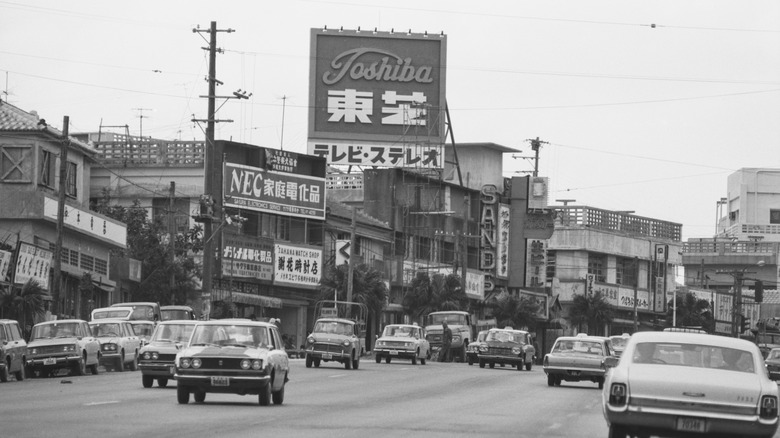Japan's $300 Million Yen Heist That Remains Unsolved After More Than Half A Century
Unsolved mysteries undoubtedly hold a fascination with the public at large, with history buffs and online sleuths still obsessed with details and potential conspiracies surrounding such cases. But while many are aware of the tales of criminals like D.B. Cooper and Jack the Ripper, fewer know about the $300 million yen heist, a cold case centered around one of the largest thefts in Japanese history.
The crime took place back in 1968, and as The Casual Criminalist noted, Japan was in the midst of a major economic boom following the decades of post-World War II rebuilding. The growth in industry, led by the tech and electronics sectors, created a bustling middle class — and with it, a lot more cash. Unfortunately, the influx of money was a major temptation for theft.
On December 6, the manager of the Nippon Trust Bank in Kokubunji received a letter with a scary threat: deliver $300 million yen — equivalent to around $830,000 USD at the time — to a nearby location by 5:00 p.m. the next day or face bombings at both his workplace and personal home. It was the beginning of a well-planned con game.
The police wait for bombings
According to The Casual Criminalist, the manager refused to bow down to the extortion plot and instead informed the police. The authorities took action and sent over four dozen officers to keep an eye on the drop-off location in the hopes of catching the crook. It is not known whether the thief caught wind of the sting or got cold feet; nevertheless, he did not show. However, the plan was not over yet. Since it was December, companies were preparing end-of-the-year bonuses for their employees, and Toshiba had planned on giving its workers a total of $300 million yen. On December 10, the money was withdrawn from the Nippon Trust Bank and placed on an armored car with four guards to be delivered to company's headquarters, per Yahoo News.
The truck proceeded down its route and was just 200 meters away from the factory when a policeman on a motorcycle pulled up. He told the guards that the bank had been bombed — just as the letter from four days prior had threatened. The policeman also warned the men that authorities believed that the truck was also armed with explosives. At that moment, smoke began to emerge from the underbelly of the vehicle, and the guards fled the truck. The policeman, meanwhile, got into the driver's seat and calmly drove away.
A massive manhunt follows
Understandably, the search for the villain was explosive. According to MoneyWeek, around 170,000 policemen were assigned to the case. This massive force went through 110,000 suspects and filtered through an eye-watering 780,000 montage photos in their attempts to find the culprit. They also went door to door with a composite sketch of the suspect, but ultimately, they were unsuccessful in finding their wanted man.
It was always the robber's plan that the police would find the investigation a challenge. While the crook did leave behind some evidence, such as the counterfeit police motorcycle and the flares that provided the smoke, he also planted fake clues that deliberately misled investigators and confused multiple working theories. Though authorities could point to some likely suspects, police never felt confident enough to make an arrest, and the case remains unsolved.
What adds another layer of mystery is that the statute of limitations for the crime passed in 1988. This means that the thief could have identified himself and made more money by selling books or giving talks about his infamous crime — with no legal repercussions. Nevertheless, he appears to have decided to remain anonymous and let the lore about the brazen daylight heist by a single man live on.


